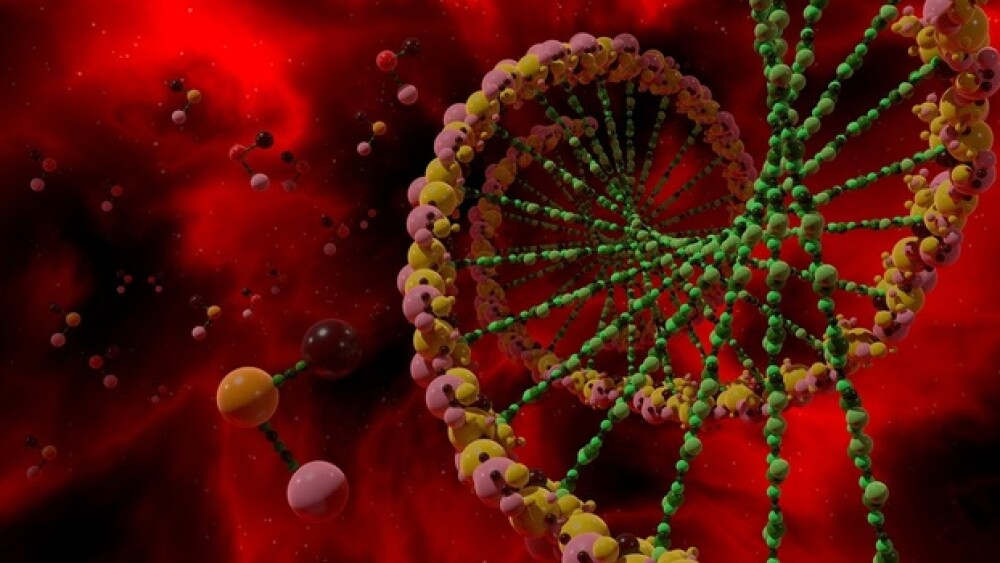Chinese researchers published a study in the New England Journal of Medicine describing their use of a form of gene therapy to treat an HIV-positive man.
Chinese researchers published a study in the New England Journal of Medicine describing their use of a form of gene therapy to treat an HIV-positive man. The scientists infused the patient with donor cells whose DNA had been edited using CRISPR. The patient is reportedly doing well.
The patient received the transfusion about 19 months ago and the report suggests there have been no treatment side effects. However, the treatment was designed to eliminate HIV from the patient’s cells, which it did not accomplish.
“They attempted a moonshot, and while they did not land on the moon, they got back home safely,” Fyodor Urnov of the Innovative Genomics Institute at the University of California, Berkeley, told STAT. “They highlighted how to get to the moon.”
The therapy was conducted by Hongkui Deng of Peking University. The patient was originally diagnosed with HIV in May 2016 and then diagnosed with acute lymphoblastic leukemia (ALL) about two weeks later. The individual was provided with standard AIDS treatment, which involved antiretroviral therapy (ART) and chemotherapy for the ALL.
Deng and his team saw an opportunity to attempt to eradicate the patient’s HIV. Because of the ALL, they had a rationale for destroying the patient’s bone marrow cells, which could then be replaced by stem cells, a relatively standard form of bone marrow transplant. But the difference would be that instead of using a healthy donor’s stem cells, they could modify the stem cells using CRISPR to disable the CCR5 gene. Without the CCR5 gene, HIV doesn’t invade immune cells.
The procedure, though important, was not unprecedented. In March 2019, researchers described a second patient, dubbed the “London Patient,” whose HIV was apparently eradicated. The first patient, Timothy Ray Brown, dubbed the “Berlin Patient” was apparently cured of HIV in 2007. Both of those patients had blood cancers that required chemotherapy and bone marrow transplants. The “London Patient” received stem cell transplants from donors carrying a mutation of CCR-delta 32. The “Berlin Patient” received a standard stem cell transplant, and is currently in remission.
The Chinese researchers took an additional step in modifying the CCR5 gene using CRISPR in the stem cells used for the transplant. His cancer is in full remission. However, he remains infected with HIV and continues the use of antiretroviral drugs.
In an accompanying editorial written by cancer researcher Carl June of the Center for Cellular Immunotherapies and the Parker Institute for Cancer Immunotherapy, Perelman School of Medicine, University of Pennsylvania, he said, “The safety profile appears to be acceptable,” and that the gene editing seemed to be precise and did not stimulate an immune response from the patient. He also noted that a single patient didn’t provide enough data to make final conclusions, though.
CRISPR typically only successfully edits a small proportion of cells in the grouping of cells being edited. Deng and his team tested the stem cells prior to infusion and found that 17.8% did not have a functioning CCR5. Post-infusion, they evaluated the patient’s bone marrow and found that over time only 5.2% to 8.28% of the bone marrow cells that derived from the infusion, had the CCR5 edit.
Deng told STAT that was a “low efficiency of gene editing in the patient.” Deng also indicated that the reason for this was probably that many of the edited, infused cells didn’t survive and were outnumbered by the unedited donor cells. This is also likely why the HIV persists, because of the relatively low number of CCR5-edited cells. The percentage of the edited cells did rise, however, when the patient was taken off ART for seven months after the stem cell transplant, although the HIV numbers rose, and the healthy T-cell levels dropped.
This has resulted in some questions about the rationale for continuing the transplant, when the number of edited stem cells was so low. Urnov told STAT that it was well known “that more efficient CCR5 knockout tracks with response. They chose to treat a subject with cells that had less than 20% editing. This is not a decision I would have made.”
Deng was born in China, graduated with an undergraduate degree in China, and received his PhD at UCLA in 1995. He conducted a postdoctoral fellowship at New York University and in 1998 was research director of Boston-based biotech company ViaCell. He returned to China in 2001 with a professorship at Peking University.





